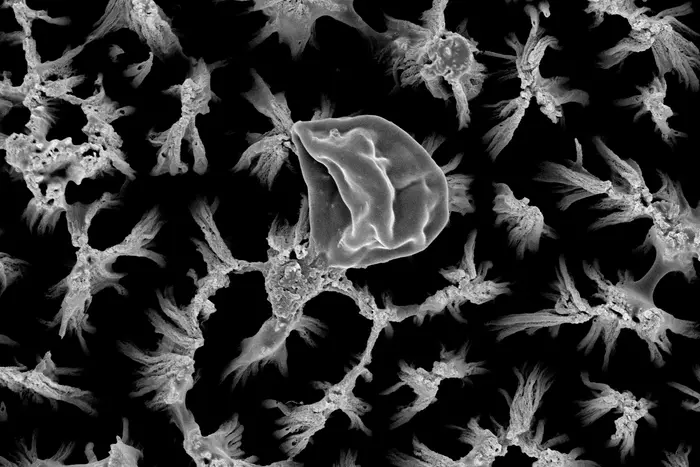Fun fact: Insect wings, such as those on dragonflies, have tiny spikes across their surfaces called nanopillars that are handy for killing bacteria. Now scientists are taking inspiration from these little natural defenses as a new method to combat drug-resistant superbugs that threaten patients receiving implants.
What are superbugs?
Superbugs are on the rise. These are strains of bacteria, viruses, parasites, and fungi that have developed resistance to traditional treatments, such as antibiotics and other medications. For over a decade, doctors across the world have been warning about the rise of drug-resistant microorganisms and the threat they pose to our health.
According to one study, an estimated 1.27 million people died from antibiotic-resistant infections in 2019, and millions more were killed by conditions impacted by the microbes. Since the COVID-19 pandemic, the situation has only gotten worse, to the extent that the UN has warned that the annual number of deaths could rise to 10 million per year by 2050.
With this troubling forecast, researchers are trying to find new ways to fight back against infections that had previously been easy to control.
One area of concern relates to the care of implants – such as those used for hip replacements or dental prostheses – which are often treated using a range of antimicrobial coatings, chemicals, and antibiotics to stop infections. However, a growing number of drug-resistant strains are becoming resistant to these methods, and they may even be contributing to the increased resistance.
Pop the buggers
To address this, researchers with RMIT University have designed a pattern of microscale spikes that can be etched into implant materials like titanium, which provide effective protection against infections, even antimicrobial-resistant ones.
The team tested their idea on multidrug-resistant Candida, a fungus that is responsible for one in 10 hospital-acquired medical device infections. The fungus can be deadly in patients undergoing implant interventions.
The spikes were specially designed to be a similar height to a fungal cell and were found to kill around half of the cells soon after they made contact. Even those that survived initial contact were so injured they were not able to reproduce or cause further infection. Any Candida that remained were as good as dead.
“The Candida cells that were injured underwent extensive metabolic stress, preventing the process where they reproduce to create a deadly fungal biofilm, even after seven days,” Dr Denver Linklater, lead postdoctoral researcher from RMIT’s School of Science, said in a statement.
“They were unable to be revived in a non-stress environment and eventually shut down in a process known as apoptosis, or programmed cell death.”

A ruptured Candida cell on top of the titanium micro-spikes.
This was not the first time such irregular surfaces have been shown to limit infections, as earlier research found that similar micro-spikes were effective at killing common pathogenic bacteria such as Staphylococcus aureus. However, the latest work shines additional light on how the design of antifungal surfaces can help prevent biofilms forming and could be a promising remedy to multidrug-resistant yeasts.
“The fact that cells died after initial contact with the surface – some by being ruptured and others by programmed cell death soon after – suggests that resistance to these surfaces will not be developed,” group leader Distinguished Professor Elena Ivanova added.
“This is a significant finding and also suggests that the way we measure the effectiveness of antimicrobial surfaces may need to be rethought.”
Previous research into the role surfaces can play in preventing superbug infections has been advancing over the last decades, but there are challenges. As with any treatment against microorganisms, it is only a matter of time before some sort of resistance is developed unless the strain can be eliminated completely.
To date, it has not been possible to find a pattern for the surface of implants that kills 100 percent of the microbes in all instances. As such, the search goes on, but the new results are extremely promising.
“This latest study suggests that it may not be entirely necessary for all surfaces to eliminate all pathogens immediately upon contact if we can show that the surfaces are causing programmed cell death in the surviving cells, meaning they die regardless,” Professor Ivanova explained.
Bioinspired solutions for new problems
Professor Ivanova was among the first researchers to identify the mechanisms that kill bacteria on these types of surfaces. She observed that bacteria that attempted to settle on insect wings were eliminated by the nanopillars that ruptured their membranes.
“It’s like stretching a latex glove,” Ivanova explained. “As it slowly stretches, the weakest point in the latex will become thinner and eventually tear.”
Over the last decade, Ivanova and her colleagues have attempted to replicate these natural nanopillars on other surfaces. In this latest effort, the team used plasma etching to apply nanopatterns on titanium. This method is easy to perform and can be used on other materials as well.
“This new surface modification technique could have potential applications in medical devices but could also be easily tweaked for dental applications or for other materials like stainless steel benches used in food production and agriculture,” Ivanova added.
The study is published in Advanced Material Interfaces.
Source Link: New Micro-Spiked Materials Could Skewer Drug-Resistant Superbugs